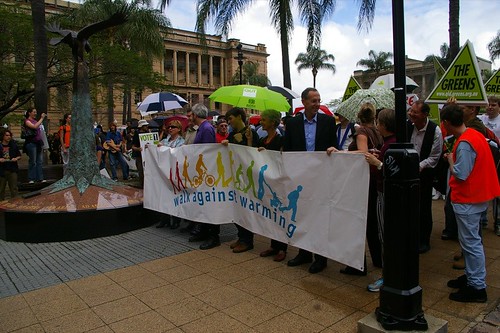by Jeremy Lovell
From CommonDreams.org
Up to five offshore substations will be installed to collect power from groups of wind turbines before feeding it to shore via the main export cables. The voltage will also be stepped up to increase the efficiency of power transmission in the export cables.
Each offshore substation will typically comprise the following key components: transformers, electrical switchgear, and back-up electrical generator and batteries.
The offshore substations would be approximately 25m x 25m x 20m high, standing up to 40m above the level of the sea. Foundations will be similar to those used for the wind turbines.
Britain gave a green light on Monday for the world's biggest offshore wind farm, hoping it will help curb greenhouse gases and global warming.
The 341-turbine London Array, along with the smaller 100-turbine Thanet wind farm which was also approved, will supply 1.3 gigawatts of electricity -- enough to power one million homes.
"This announcement will be the first of a number of large-scale offshore wind farms in the UK," said Environment Minister David Miliband.
Thanet should come on stream in 2008 with the London Array about two years later. Both are off the south coast of England.
Environmentalists welcomed the announcement and even the Royal Society for the Protection of Birds dropped objections after modifications to the plans to save a local bird colony.
Although Britain is developing other renewable sources of power from waves, tides and biomass, the wind energy sector is by far the most advanced.
Offshore wind farms are sprouting up all round the coast and cause less controversy than onshore farms which critics say are ugly, but detractors say giant wind farms alone cannot do enough to fight global warming as they only operate intermittently.
Most scientists agree that temperatures will rise by two to six degrees Celsius this century due mainly to carbon emissions from burning fossil fuels for power and transport, putting millions of lives at risk from floods and famines.
Britain is bringing in a law next year pledging to cut carbon emissions by 60 percent by 2050. As part of these efforts it has vowed to get 10 percent of its electricity from renewable sources by 2010, rising to 20 percent by 2020.
The figure is currently barely three percent.
Former World Bank chief economist Nicholas Stern said in October urgent action on global warming was vital, and that a delay would multiply the cost 20 times.
The London Array -- a consortium of E.ON
The 500 million pound ($976 million) Thanet farm, led by developer Warwick Energy, will cover 35 square km off Kent.
Wednesday, December 20, 2006
Britain Approves World's Biggest Offshore Wind Farm
Posted by
National Enquirer
at
8:51 am
![]()
Subscribe to:
Post Comments (Atom)





1 comment:
wah, cool picture!
Post a Comment